Chapter 9. Social Inequality
9.1. What Is Social Inequality?

Sociologists use the term social inequality to describe the unequal distribution of valued resources, rewards, and social positions in a society. Key to the concept are the notions of social differentiation and social stratification. The question for sociologists is: how are systems of stratification formed? What is the basis of systematic social inequality in society?
Social differentiation refers to the social characteristics — social differences, identities, and roles — used to differentiate people and divide them into different categories, such as race, gender, age, class, occupation, and education. These social categories have implications for social inequality. Social differentiation by itself does not necessarily imply a division of individuals into a hierarchy of rank, privilege, and power. However, when a social category like class, occupation, gender, or race puts people in a position where they can claim a greater share of resources or rewards, then social differentiation becomes the basis of social inequality.
The term social stratification refers to an institutionalized system of social inequality. It refers to a situation in which social inequality has solidified into an ongoing system that determines and reinforces who gets what, when, and why. Social differentiation based on different characteristics becomes the basis for social inequality.
Students may remember the word “stratification” from geology class. The distinct horizontal layers found in rock, called “strata,” are a good way to visualize social structure. Society’s layers are made of people, and society’s resources are distributed unevenly throughout the layers. The people with the most resources represent the top layer of the social structure of stratification. Other groups of people, with progressively fewer and fewer resources, represent the lower layers of society. Social stratification assigns people to socio-economic strata based on a process of social differentiation — “these type of people go here, and those type of people go there.” The outcome is differences in wealth, income and power. Again, the question for sociologists is how systems of stratification are formed. What is the basis of systematic social inequality in society?
Equality of Condition and Equality of Opportunity

In Canada, the dominant ideological presumption about social inequality is that everyone has an equal chance at success. This is the belief in equality of opportunity, which can be contrasted with the concept of equality of condition. Equality of opportunity is the idea that everyone has an equal possibility of becoming successful. It exists when people have the same chance to pursue economic or social rewards. This is often seen as a function of equal access to education, meritocracy (where individual merit determines social standing), and formal or informal measures to eliminate social discrimination.
Equality of condition is the situation in which everyone in a society has a similar actual level of wealth, status, and power. Although degrees of equality of condition vary markedly in modern societies, it is clear that even the most egalitarian societies today have considerable degrees of inequality of condition. Ultimately, equality of opportunity means that inequalities of condition are not so great that they greatly hamper a person’s opportunities or life chances. Whether Canada is a society characterized by equality of opportunity, or not, is a subject of considerable sociological debate.
To a certain extent, Ted Rogers’ story illustrates the idea of equality of opportunity. His personal narrative is one in which hard work and talent — not inherent privilege, birthright, prejudicial treatment, or societal values — determined his social rank. This emphasis on individual effort is based on the belief that people individually control where they end up in the social hierarchy, which is a key piece in the idea of equality of opportunity. Most people connect inequalities of wealth, status, and power to the individual characteristics of those who succeed or fail. The story of the Aboriginal gang members, although it is also a story of personal choices, casts that belief into doubt. It is clear that the type of choices available to the Aboriginal gang members are of a different range and quality than those available to the Rogers family. The available choices and opportunities are a product of habitus and location within the system of social stratification.
While there are always inequalities between individuals in terms of talent, skill, drive, chance, and so on, sociologists are interested in larger social patterns. Social inequality is not about individual qualities and differences, but about systematic inequalities based on group membership, class, gender, ethnicity, and other variables that structure access to rewards and status. In other words, sociologists are interested in examining the structural conditions of social inequality. There are of course differences in individuals’ abilities and talents that will affect their life chances. The larger question, however, is how inequality becomes systematically structured in economic, social, and political life. In terms of individual ability: Who gets the opportunities to develop their abilities and talents, and who does not? Where does “ability” or “talent” come from? As Canadians live in a society that emphasizes the individual (individual effort, individual morality, individual choice, individual responsibility, individual talent, etc.) it is often difficult to see the way in which life chances are socially structured.
Wealth, Income, Power and Status
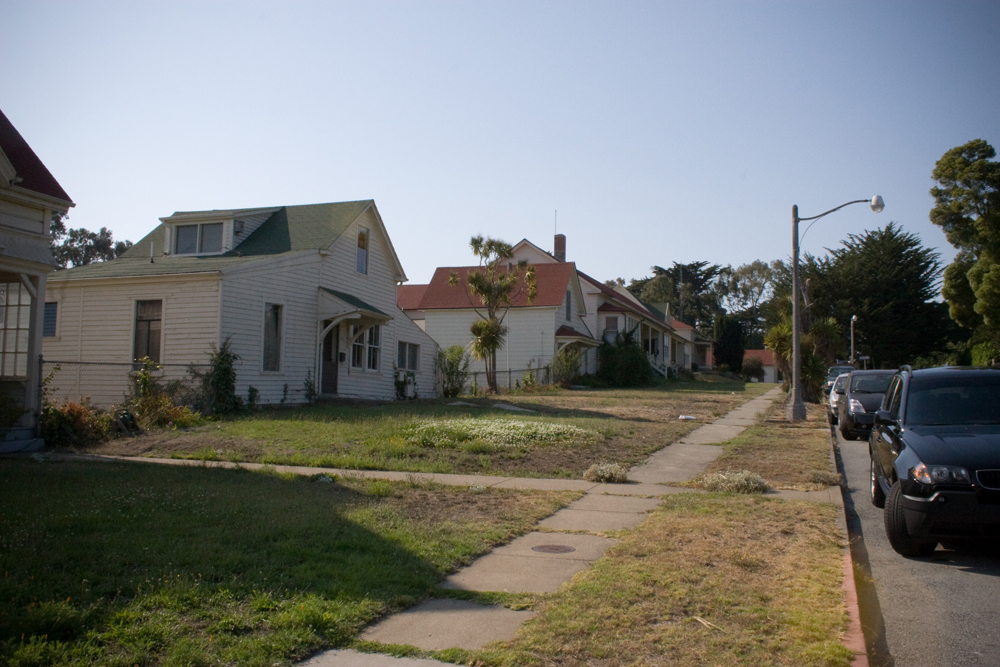
Factors that define the layers of stratification vary in different societies. In most modern societies, stratification is indicated by differences in wealth, the net value of money and assets a person has, and income, a person’s wages, salary, or investment dividends. It can also be defined by differences in power (e.g., how many people a person must take orders from versus how many people a person can give orders to, or how many people are affected by one’s orders) and status (the degree of honour or prestige one has in the eyes of others). These four factors create a complex amalgam that defines an individual’s social standing within a hierarchy.
Usually the four factors coincide, as in the case of corporate CEOs, like Ted Rogers, at the top of the hierarchy — wealthy, powerful, and prestigious — and the Aboriginal offenders at the bottom — poor, powerless, and abject. Sociologists use the term status consistency to describe the consistency of an individual’s rank across these factors.
Students can also think of someone like the Canadian Prime Minister — who ranks high in power, but with a salary of approximately $320,000 — earns much less than comparable executives in the private sector (albeit eight times the average Canadian salary). The Prime Minister’s status or prestige also rises and falls with the fluctuations of politics and public opinion. The Nam-Boyd scale of status, based on education and income, ranks politicians (legislators) at 66/100, the same status as cable TV technicians (Boyd, 2008). There is status inconsistency in the prime minister’s position.
Teachers often have high levels of education, which give them high status (92/100 according to the Nam-Boyd scale), but they receive relatively low pay. Many believe that teaching is a noble profession, so teachers should do their jobs for the love of their profession and the good of their students, not for money. Yet no successful executive or entrepreneur would embrace that attitude in the business world, where profits are valued as a driving force. Cultural attitudes and beliefs like these support and perpetuate social inequalities.
Systems of Stratification
Sociologists distinguish between two types of stratification systems. Closed systems accommodate little change in social position. They do not allow people to shift levels and do not permit social relations between levels. Open systems, which are based on achievement, allow movement and interaction between layers and classes. The different systems also produce and foster different cultural values, like the values of loyalty and traditions versus the values of innovation and individualism. The difference in stratification systems can be examined by the comparison between class systems and caste systems.
The Caste System

Caste systems are closed stratification systems in which people can do little or nothing to change their social standing. A caste system is one in which people are born into their social standing and remain in it their whole lives. It is based on fixed or rigid status distinctions, rather than economic classes per se.
As noted above, status is defined by the level of honour or prestige one receives by virtue of membership in a group. Sociologists make a distinction between ascribed status: a status one receives by virtue of being born into a category or group (e.g., caste, hereditary position, gender, race, ethnicity, etc.), and achieved status: a status one receives through individual effort or merits (e.g., occupation, educational level, moral character, etc.). Caste systems are based on a hierarchy of ascribed statuses, because people are born into fixed caste groups. A person’s occupation and opportunity for education follow from their caste position.
In a caste system, people are assigned roles regardless of their individual talents, interests, or potential. Marriage is endogamous (from endo- ‘within’ and Greek gamos ‘marriage’) which means marriage between castes is forbidden, whereas exogamous marriage is a marriage union between people from different social groups. There are virtually no opportunities to improve one’s social position. Instead, the relationship between castes is bound by institutionalized rules, and highly ritualistic procedures come into play when people from different castes come into contact. People value traditions and often devote considerable time to perfecting the details of ritualistic procedures.
The feudal systems of Europe and Japan can, in some ways, be seen as caste systems in that the statuses of positions in the social stratification systems were fixed, and there was little or no opportunity for movement through marriage or economic opportunities. In Europe, the feudal estate system divided the population into clergy (first estate), nobility (second estate), and commoners (third estate), which included artisans, merchants, and peasants. In early European feudalism, it was still possible for a peasant or a warrior to achieve a high position in the clergy or nobility, but later the divisions became more rigid. In Japan, between 1603 and 1867, the mibunsei system divided society into five rigid strata in which social standing was inherited. At the top was the Emperor, then court nobles (kuge), military commander-in-chief (shogun), and land-owning lords (daimyo). Beneath them were four classes or castes: the military nobility (samurai), peasants, craftsmen, and merchants. The merchants were considered the lowest class because they did not produce anything with their own hands. There was also an outcast or untouchable caste known as the burakumin, who were considered impure or defiled because of their association with death: executioners, undertakers, slaughterhouse workers, tanners, and butchers (Kerbo, 2006).
The caste system in India from 4,000 years ago until the 20th century probably best typifies the system of stratification. In the Hindu caste tradition, people were expected to work in the occupation of their caste and enter into marriage according to their caste. Originally there were four castes: Brahmans (priests), Kshatriyas (military), Vaisyas (merchants), and Sudras (artisans, farmers). There were also the Dalits or Harijans (“untouchables”). Hindu scripture said, “In order to preserve the universe, Brahma (the Supreme) caused the Brahmin to proceed from his mouth, the Kshatriya to proceed from his arm, the Vaishya to proceed from his thigh, and the Shudra to proceed from his foot” (Kashmeri, 1990).
Accepting this social standing was considered a moral duty. Cultural values and economic restrictions reinforced the system. Caste systems promote beliefs in fate, destiny, and the will of a higher power, rather than promoting individual freedom as a value. A person who lives in a caste society is socialized to accept their social standing, and this is reinforced by the society’s dominant norms and values.
Although the caste system in India has been officially dismantled, its residual presence in Indian society is deeply embedded. In rural areas, aspects of the tradition are more likely to remain, while urban centres show less evidence of this past. In India’s larger cities, people now have opportunities to choose their own career paths and marriage partners. As a global centre of employment, corporations have introduced merit-based hiring and employment to the nation. The caste system has been largely replaced by a class system of structured inequality. Nevertheless, Dalits continue to experience violence and discrimination in hiring or obtaining business loans (Jodhka, 2018).
The Class System
A class system is based on both socio-economic factors and individual achievement. It is at least a partially open system. A class consists of a set of people who have the same relationship to the means of production or productive property — that is, to the things used to produce the goods and services needed for survival, such as tools, technologies, resources, land, workplaces, etc. In Karl Marx’s (1848) analysis, class systems form around the institution of private property, dividing those who own or control productive property from those who do not, who survive on the basis of selling their labour. In capitalist societies, for example, the dominant classes are the capitalist class and the working class.
In a class system, social inequality is structural, meaning it is built into the organization of the economy. The relationship to the means of production (i.e., ownership/non-ownership) defines a persistent, objective pattern of social relationships that exists independently of individuals’ personal or voluntary choices and motives.
Unlike caste systems, however, class systems are open in the sense that individuals are able to change class position. Individuals are at least formally free to gain a different level of education or occupation than their parents. They can move up and down within the stratification system. They can also socialize with and marry members of other classes, allowing people to move from one class to another. In other words, individuals can move up and down the class hierarchy, even while the class categories and the class hierarchy itself remain relatively stable. It is not impossible for individuals to pass back and forth between classes through social mobility, but the class structure itself remains intact, structuring people’s lives, privileges, wealth, and social possibilities.
In a class system, one’s occupation is not fixed at birth. Though family background tends to predict where one ends up in the stratification system, personal factors play a role. For example, Ted Rogers Jr. chose a career in media like his father but managed to move upward from a position of modest wealth and privilege in the petite bourgeoisie, to being the fifth-wealthiest bourgeois in the country. On the other hand, his father Ted Sr. chose a career in radio based on individual interests that differed from his own father’s. Ted Sr.’s father, Albert Rogers, held a position as a director of Imperial Oil. Ted Sr. therefore moved downward from the class of the bourgeoisie to the class of the petite bourgeoisie.
Making Connections: Case Study
The Commoner Who Could Be Queen
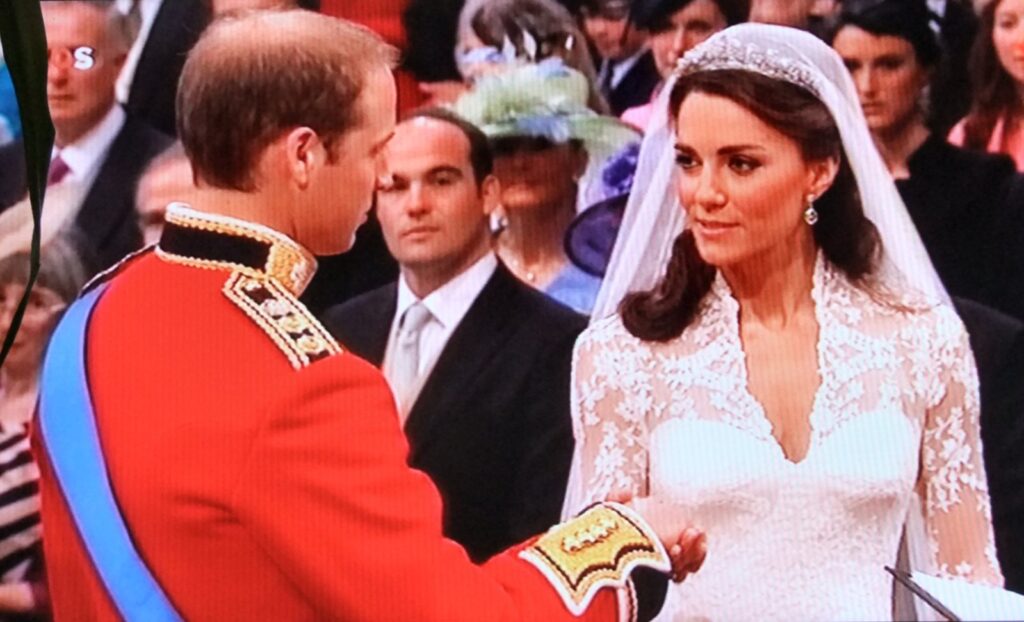
On April 29, 2011, in London, England, Prince William, Duke of Cambridge, married Catherine (“Kate”) Middleton, a commoner. Throughout its history, it has been rare, though not unheard of, for a member of the British royal family to marry a commoner. Kate Middleton had an upper-middle-class upbringing. Her father was a former flight dispatcher, and her mother was a former flight attendant. The family then formed a lucrative mail order business for party accessories. William was the elder son of Charles, Prince of Wales, and Diana, Princess of Wales. Kate and William met when they were both students at the University of St. Andrews in Scotland (Köhler, 2010).
The rules regarding the marriage of royals trace their history to Britain’s formal feudal monarchy, which arose with William of Normandy’s conquest in 1066. Feudal social hierarchy was originally based on landholding. The monarch’s family (royalty) was at the top, vassals, nobles and knights (landholders) below the king, and commoners or serfs on the bottom. This was generally a closed system, with people born into positions of nobility or serfdom. Wealth was passed from generation to generation through primogeniture, a law stating that all property was to be inherited by the firstborn son. If the family had no son, the land went to the next closest male relation. Women could not inherit property, and their social standing was primarily determined through marriage. From the late feudal era onward, a royal marrying a commoner was a scandal. In 1937, the British parliament obliged Edward VIII to abdicate his succession to King of the United Kingdom, so he could marry the American divorcée, Wallis Simpson. Not only was she a commoner, but she was also divorced, which contradicted the Church of England doctrine.
The rise of capitalism changed Britain’s class structure. The feudal commoner class generated both the new dominant class of the bourgeoisie or capitalists and the new subordinate class of the proletariat or wage labourers. The aristocracy and the royals continued as a class through their wealth and property, but their position in society became increasingly based on status and tradition alone. Today, the British government is a constitutional monarchy, with the prime minister and other ministers elected to their positions. The royal family’s role is largely ceremonial. The historical differences between nobility and commoners have blurred, and the modern class system in Britain is similar to Canada. Since Edward VIII’s abdication in 1937, Queen Elizabeth II’s sister and several of her children and grandchildren have married commoners.
Today, the royal family still commands wealth, power, and a great deal of attention. In 2017, Forbes estimated the total wealth of the royal family to be $88 billion (Rodriguez, 2017). Since Queen Elizabeth II passed away in September 2022, Prince Charles has ascended the throne as king. His wife Camille Parker-Bowles, also a commoner and divorcée, is expected to become “Princess Consort.” If Charles had abdicated (chosen not to become king) or died, the position would go to Prince William. If that happened, Kate Middleton would be called Queen Catherine and hold the position of Queen Consort. She would be one of the few queens in history to have earned a university degree (Marquand, 2011). Of note here is, of course, Prince Harry, who married the commoner and divorcée Meghan Markle. Prince Harry is currently 6th in line for the British throne, after Prince William’s children. If she succeeded to Queen Consort, Meghan Markle would be the first queen with African heritage.
Initially there was a great deal of social pressure on Kate Middleton not only to behave as a royal, but to bear children. The royal family recently changed its succession laws to allow daughters, not just sons, to ascend the throne. Her firstborn son, Prince George, was born on July 22, 2013, so the new succession law is not likely to be tested in the near future. However, behind George is Princess Charlotte (b. 2015) and Prince Louis (b. 2018). Kate’s experience — from commoner to possible queen — demonstrates the fluidity of social class position in modern society.
Social Class
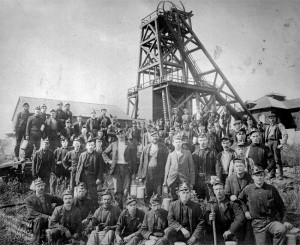

Social class is both obvious and not so obvious in Canadian society. It is based on subjective impressions, outward symbols, and less visible structural determinants. Can one tell a person’s education level based on clothing? Is opening an $80 bottle of wine for dinner normal, an exceptional occasion, or an insane waste of money? Can one guess a person’s income by the car they drive? There was a time in Canada when people’s class was more visibly apparent. In some countries, like the United Kingdom, class differences can still be gauged by differences in schooling, lifestyle, and even accent. In Canada, however, it is harder to determine class from outward appearances.
For sociologists, too, categorizing class is a fluid science. One debate in the discipline is between Marxist and Weberian approaches to social class (Abercrombie & Urry, 1983).
Karl Marx
Marx’s analysis emphasizes a historical materialist approach to the underlying structures of the capitalist economy. Classes are historical formations that distribute people into categories based on the organization and structure of the economy. Marx’s definition of social class rests essentially on one materialist variable: a group’s relation to the means of production (ownership or non-ownership of productive property or capital). Therefore, in Marxist class analysis, there are two dominant classes in capitalism — the working class and the owning class — and any divisions within the classes based on occupation, status, education, etc. are less important than the tendency toward increasing separation and polarization of these two classes.
Marx referred to these two classes as the bourgeoisie and the proletariat. The capitalist class (bourgeoisie) lives from the proceeds of owning or controlling productive property (capital assets like factories, technology, software platforms or machinery, or capital itself in the form of investments, stocks, and bonds). The working class (proletariat) live from selling their labour to the capitalists for a wage or salary. Their interests are in conflict, as higher profits depend on lower wages, which accounts for the characteristic power dynamics, conflicts, instabilities and periodic crises of capitalist societies.
In addition, he described the classes of the petite bourgeoisie (the little bourgeoisie) and the lumpenproletariat (the sub-proletariat). The petite bourgeoisie are those like small business owners, farmers, and contractors who own some property and perhaps employ a few workers, but still rely on their own labour to survive. The lumpenproletariat are the chronically unemployed or irregularly employed, who are in and out of the workforce. They are what Marx referred to as the “reserve army of labour,” a pool of potential labourers who are surplus to the needs of production at any particular time.
Max Weber
Weber defined social class slightly differently, as the life chances one shares in common with others by virtue of possession of property, goods, skills or opportunities for income (1969). Life chances refer to the ability or probability of an individual to act on opportunities and attain a certain standard of living. Owning property or capital, or not owning property or capital, is still the basic variable that defines a person’s class situation or life chances. However, class position is defined with respect to markets rather than the process of production. It is the value of one’s capital, products or skills in the commodity or labour markets at any particular time that determines whether one has greater or fewer life chances.
This yields a model of class hierarchy based on multiple gradations of socio-economic status, instead of a division between two principle classes. Analyses of class inspired by Weber tend to emphasize gradations of status relating to several variables like wealth, income, education, and occupation. Class stratification is not just determined by a group’s economic position, but by the prestige of the group’s occupation, education level, consumption, and lifestyle. It is a matter of status — the level of honour or prestige one holds in the community by virtue of one’s social position — as much as a matter of class.
Based on the Weberian approach, some sociologists talk about upper, middle, and lower classes (with many subcategories within them) in a way that mixes status categories with class categories. These gradations are often referred to as a group’s socio-economic status (SES): their social position relative to others based on income, education, and prestige of occupation. For example, although plumbers might earn more than high school teachers and have greater “life chances” in a particular economy, the status division between blue-collar work (people who “work with their hands”) and white-collar work (people who “work with their minds”) means the plumbers might be characterized as lower class but teachers as middle class.
There is a randomness in the division of classes into upper, middle, and lower in the Weberian model. However, this manner of classification based on status distinctions captures something about the subjective experience of class and the shared lifestyle and consumption patterns of class that Marx’s categories often do not. An NHL hockey player receiving a salary of $6 million a year is a member of the working class, strictly speaking. He might even go on strike or get locked out according to the dynamic of capital and labour conflict described by Marx. Nevertheless, it is difficult to see what the life chances of the hockey player have in common with a landscaper or receptionist, despite the fact that they might share a common working-class background.
Class: Materialist and Interpretive Factors
Social class is a complex category to analyze. It has both a strictly materialist quality relating to a group’s structural position within the economic system, and an interpretive quality relating to the formation of status gradations, common subjective perceptions of class, differences of power in society, and class-based lifestyles and consumption patterns. Considering both the Marxist and Weberian models, social class has at least three objective components: a group’s position in the occupational structure (i.e., the status and salary of one’s job), a group’s position in the power structure (i.e., who has authority over whom), and a group’s position in the property structure (i.e., ownership or non-ownership of capital). It also has an important subjective component that relates to recognitions of status, distinctions of lifestyle, and ultimately how people perceive their place in the class hierarchy.
Making Connections: Classic Sociologists
Marx and Weber on Social Class: How Do They Differ?
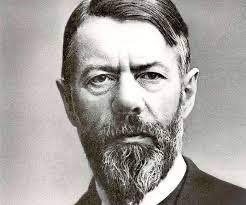
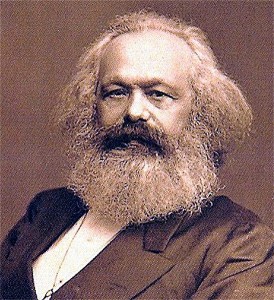
Often, Marx and Weber are perceived as at odds in their approaches to class and social inequality, but it is perhaps better to see them as articulating different styles of analysis.
Weber’s analysis presents a more complex model of the social hierarchy of capitalist society than Marx. Weber’s model goes beyond the economic structural class position to include the variables of status (degree of social prestige or honour) and power (degree of political influence). Thus, Weber provides a multi-dimensional model of social hierarchy. As a result, although individuals might be from the same objective class, their position in the social hierarchy might differ according to their status and political influence. For example, women and men might be equal in terms of their class position, but because of the inequality in the status of the genders within each class, women (as a group) remain lower in the social hierarchy.
With respect to class specifically, Weber also relies on a different definition than Marx. As noted above, Weber (1969) defines class as the “life chances” one shares in common with others by virtue of one’s possession of goods or opportunities for income. Class is defined with respect to markets, rather than the process of production. As in Marx’s analysis, the economic position that stems from owning property and capital, or not owning property and capital, is still the basic variable that defines one’s class situation or life chances. However, as the value of different types of capital or property (e.g., industrial, real estate, financial, etc.), or the value of different types of opportunity for income (i.e., different types of marketable skills), varies according to changes in the commodity or labour markets, Weber can provide a more nuanced description of an individual’s class position than Marx. A skilled tradesman like a pipe welder might enjoy a higher class position and greater life chances in Northern Alberta where such skills are in demand, than a high school teacher in Vancouver or Victoria where the number of qualified teachers exceeds the number of positions available. If one adds the element of status into the picture, the situation becomes even more complex, as the educational requirements and social responsibilities of the high school teacher usually confer more social prestige than the requirements and responsibilities of the pipe welder.
Nevertheless, Weber’s analysis is descriptive rather than analytical. It can provide a useful description of differences between the levels or “strata” in a social hierarchy or stratification system but does not provide an analysis of the formation of classes themselves.
On the other hand, Marx’s analysis of class is essentially one-dimensional. It has one variable: the relationship to the means of production. If one is a professional hockey player, a doctor in a hospital, or a clerk in a supermarket, one works for a wage and is therefore a member of the working class. In this regard, his analysis challenges common sense, as the difference between these different “fragments” of the working class seems paramount — at least from the point of view of the subjective experience of class. It would seem that hockey players, doctors, lawyers, professors, and business executives have very little in common with grocery clerks, factory or agricultural workers, tradespeople, or low level administrative staff, despite the fact that they all depend on being paid wages by someone.
However, the key point of Marx’s analysis is not to ignore the existence of status distinctions within classes, but to examine class structure dialectically in order to provide a more comprehensive and historical picture of class dynamics.
The four components of dialectical analysis were described in Chapter 1. An Introduction to Sociology: (1) Everything in society is related; (2) everything is caught up in a process of change; (3) change proceeds from the quantitative to the qualitative; and (4) change is the product of oppositions and struggles in society. These dialectical qualities are also central to Marx’s account of the hierarchical structure of classes in capitalist society.
With regard to the first point — everything in society is related — the main point of the dialectical analysis of class is that the working class and the owning class have to be understood in a structural relationship to one another. They emerged together out of the old class structure of feudalism. More significantly for Marx, each exists only because the other exists. The wages that define the wage labourer are paid by the capitalist; the profit and capital accumulated by the capitalist are products of the workers’ labour.
In Marx’s dialectical model, “everything is caught up in a process of change” occurs because the system is characterized by the struggle of opposites. The classes are structurally in conflict because the contradiction in their class interests is built into the economic system. The bourgeoisie as a class is defined by the economic drive to accumulate capital and increase profit. The key means to achieve this in a competitive marketplace is by reducing the cost of production by lowering the cost of labour (by reducing wages, moving production to lower wage areas, or replacing workers with labour-saving technologies). This conflicts with the interests of the proletariat who seek to establish a sustainable standard of living by maintaining their level of wages and employment in society. While individual capitalists and individual workers might not see it this way, structurally, their class interests clash and define a persistent pattern of management-labour conflict and political cleavage in modern, capitalist societies.
So, from the dialectical model, Marx can predict that the composition of classes changes over time: the statuses of different occupations vary, the proportions between workers’ income and capitalists’ profit change, and the types of production and the means of production change (through the introduction of labour-saving technologies, globalization, new products and consumption patterns, etc.). In addition, change proceeds from the quantitative to the qualitative, in the sense that the multiplicity of changes in purely quantitative variables like salary, working conditions, unemployment levels, rates of profitability, product sales, supply and demand, etc., lead to changes in qualitative variables like the subjective experience of inequality and injustice, the political divisions of “left” and “right,” the formation of class-consciousness, and eventually change in the entire economic system through new models of capital accumulation or even revolution.
The strength of Marx’s analysis is its ability to go beyond a description of where different groups fit within the class structure at a given moment in time to an analysis of why those groups and their relative positions change with respect to one another. The dialectical approach reveals the underlying logic of class structure as a dynamic system, and the potential commonality of interests and subjective experiences that define class-consciousness. As a result, in an era in which the precariousness of many high status “middle class” jobs has become clearer, the divisions of economic and political interests between the different segments of the working class becomes less so.
Media Attributions
- Figure 9.3 Office Politics: A Rise to the Top by Alex Proimos, via Flickr, is used under a CC BY-NC 2.0 licence.
- Figure 9.4 Strata in the Badlands by Just a Prairie Boy, via Flickr, is used under a CC BY 2.0 licence.
- Figure 9.5 Fort Mason Neighborhood by Orin Zebest, via Flickr, is used under a CC BY 2.0 licence.
- Figure 9.6 Woman, construction, worker, temple, india, manual, poor, labourer, labour, via PxHere, is used under a CC0 Public Domain licence.
- Figure 9.7 Royal wedding Kate & William by Gerard Stolk, via Flickr, is used under a CC BY-NC 2.0 licence.
- Figure 9.8 Item B-03624 – Group of Nanaimo coal miners at the pithead by unknown photographer, [ca. 1870] (Creation) via the Royal BC Museum/ British Columbia Archives Collection (Item B-03624), is in the public domain.
- Figure 9.9 James and Laura Dunsmuir in Italian Garden at Hatley Park, by unknown photographer, 1912-1920 (Creation), courtesy of Craigdarroch Castle Society, is in the public domain.
- Figure 9.10 File:MAX WEBER.jpg by Power Renegadas, via Wikimedia Commons, is used under a CC BY-SA 4.0 licence.
- Figure 9.11 Karl Marx by John Mayall, via Wikimedia Commons, is in the public domain.

